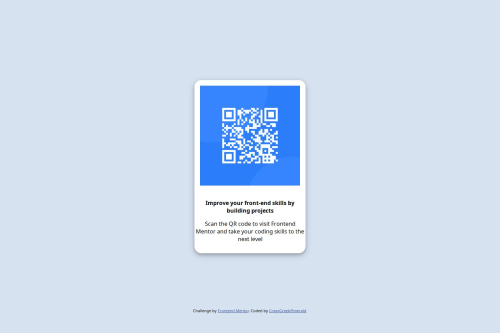Submitted about 1 year agoA solution to the QR code component challenge
Solutioned the thingamajig #3
@CrazyGreekGR

Solution retrospective
What are you most proud of, and what would you do differently next time?
I am proud of this whole project, as I managed to do it on myself, no ChatGPT! Some googling was needed, of course
What challenges did you encounter, and how did you overcome them?I didn't know some things like the drop shadow behind the box, but that was easily fixed by googling and messing around
What specific areas of your project would you like help with?In this solution, I believe I did a good job, but any correction are appreciated :)
Code
Loading...
Please log in to post a comment
Log in with GitHubCommunity feedback
No feedback yet. Be the first to give feedback on CrazyGreek's solution.
Join our Discord community
Join thousands of Frontend Mentor community members taking the challenges, sharing resources, helping each other, and chatting about all things front-end!
Join our Discord